The excitement for a trip to the farthest reaches of India’s eastern expanse had been steadily growing for years. Imagination of the breathtaking spectacle of a Dong sunrise, the allure of wandering into the remoteness of Kaho and Kibithoo—border villages, the happiness of enjoying the beautiful valleys along the Lohit River, and an ever-increasing desire to feel the cool and calm mountain breeze in Arunachal Pradesh was making me restless. Yet, the unfolding of these events was beyond my foresight.
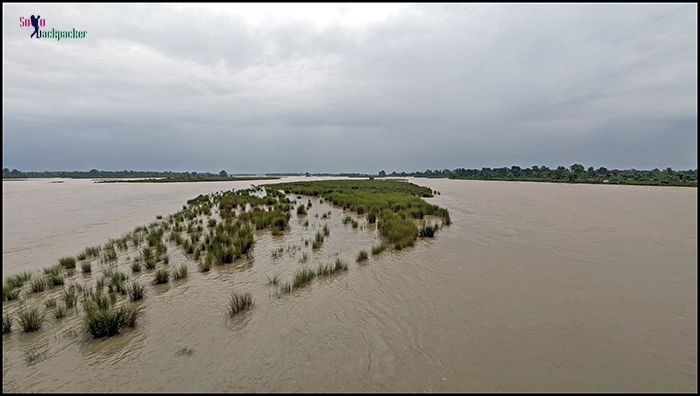
I was well aware that Monsoon wasn’t an ideal time for travel in that region, particularly in Nagaland and the distant areas of Arunachal Pradesh where the road conditions were extremely poor. Nevertheless, despite all my apprehension, I decided to travel in the month of July. Given that the school summer break in Guwahati aligned only with the month of July, I was actually having no alternative. I had few friends at Tezu Airport who could keep me informed about the rapidly changing weather conditions.
Contents
1. My Trip to Tezu
With my bags packed and my heart brimming with a blend of enthusiasm and scepticism, I embarked on a journey that would undoubtedly be a test of resilience and adaptability. Our flight had been delayed by a minimum of 5 hours due to the bad weather conditions at Tezu. Our departure from Guwahati had taken place under the brilliance of a sunny sky, but as we neared Tezu, thunderous clouds enveloped us from all sides. The flight experienced intense turbulence along the way, causing it to rattle vigorously.
Given a small size and visual landing airfield, there was no assurance that my flight would successfully touch down at Tezu. However, we managed to make a precarious landing amidst a light rainfall. Sandwiched between Hope and Despair, I finally arrived at Tezu Airport, the easternmost civil airport of India.
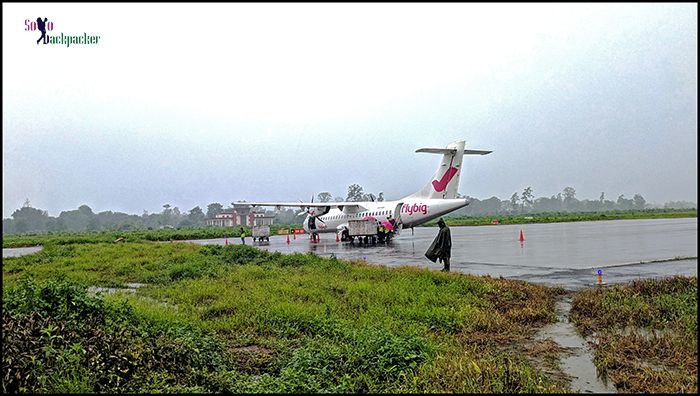
My accommodation was reserved close to the airport, so the rain wasn’t a big issue. I put on my raincoat and made my way to the homestay. However, what was supposed to be a homestay turned out to be more like a concrete guest house, lacking the traditional local ambiance I had anticipated. Nevertheless, the room was well maintained, tidy, and cozy – not a bad deal for the rate of Rs 2000 per night.
Comparatively, accommodations in Arunachal Pradesh, be it homestays, hotels, or guest houses, tend to be pricier than those in Northern India. This trend isn’t exclusive to Arunachal Pradesh; I encountered similar high costs in Meghalaya and Nagaland. On the contrary, places like Assam, Mizoram, Manipur, Tripura, and even Sikkim offer more reasonably priced options.
If Meghalaya Trip is in your mind: Travel Tips on Meghalaya
The host at the homestay is a young Nepali lady who has been residing in Tezu since her early years. She possesses a genuinely kind and warm-hearted nature, and her exceptional hospitality was truly remarkable. During my time there, she prepared delicious mouth-watering meals with great affection. The proprietor of the homestay doesn’t visit it frequently, thus the responsibility of managing the day-to-day operations has been entrusted to this lady and her husband. Originating from the Mishmi tribe, her husband is a local resident. Together, they efficiently operate the homestay in a highly professional manner and boast valuable connections for facilitating various tours in and around Tezu.
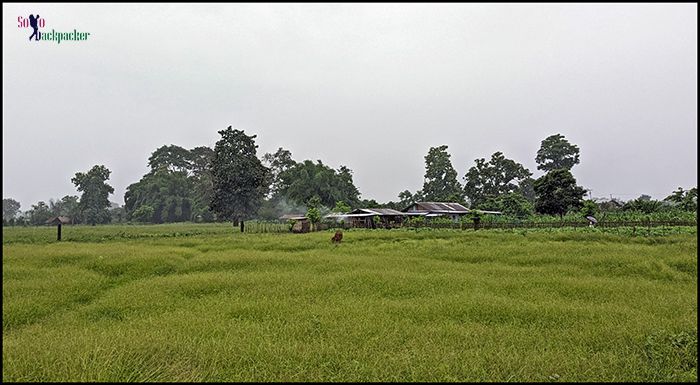
I was originally intended to spend just one night there before catching the shared morning cab to Walong the following day. Luckily, the homestay’s caretaker had the contact information for the winger counter at Tezu. She made a call and reserved a seat for me on the vehicle scheduled to depart the next day. In this region, most of the mountainous areas are connected through shared Tata Sumo jeeps or Winger mini buses. Larger buses are mainly found in flat areas such as the route between Tezu and Tinsukia.
Typically, the vehicles leave Tezu in the morning, usually between 6:00 AM and 9:00 AM. It’s generally challenging to find a shared vehicle after 10:00 AM. For other destinations like Roing and Tinsukia, vehicles are available until the evening, and there might even be night services.
However, if you plan to travel to Anini from Tezu, you must reach Roing by 6:00 AM or consider arriving the day before to catch the early morning vehicle. Finding a vehicle from Tezu to Anini is quite rare. Therefore, from Tezu, you can find vehicles heading to Walong, Kibithoo, and Kaho. On the other hand, from Roing, you can find vehicles going to Dambuk, Passighat, Mayodia Pass, and Anini.
There wasn’t much to explore in the town of Tezu itself. It’s surrounded by mountains, and to truly appreciate the beauty of the mountains, experience the refreshing mountain air, or listen to the powerful sounds of monsoon rivers, one needs to venture outside the town. Inside the town, there’s a Botanical Garden that the caretaker spoke highly of, but it didn’t capture my interest. However, there’s a proliferation of resorts within a 20 km radius along the many rivers in this region, making them perfect for daytime visits and enjoyable picnic atmospheres. The nights are particularly peaceful unless you go for the night parties at places like M2B.
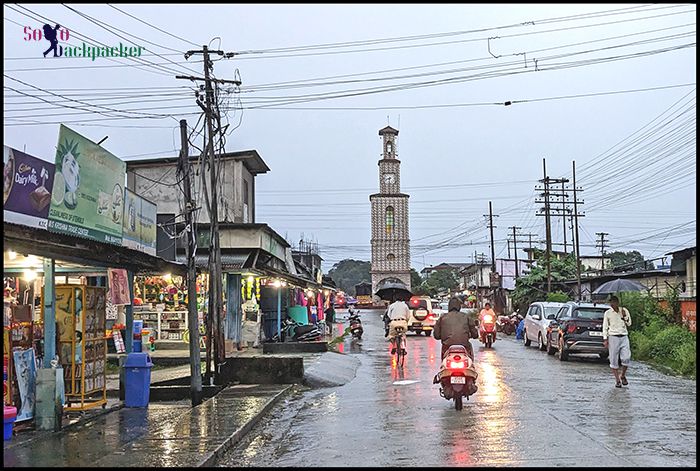
During the evening, I leisurely strolled through the town, indulged in some delicious momos at a local restaurant, visited a couple of former colleagues from Delhi who now works at Tezu Airport, and returned early to the guest house.The rain had been persistent ever since I had arrived. The caretaker informed me that even though my reservation for a trip to Walong was scheduled for the following day, a landslide had blocked the road. The final decision about the feasibility of the journey would only be made in the morning when it would be determined if the road to Walong was passable by vehicle.
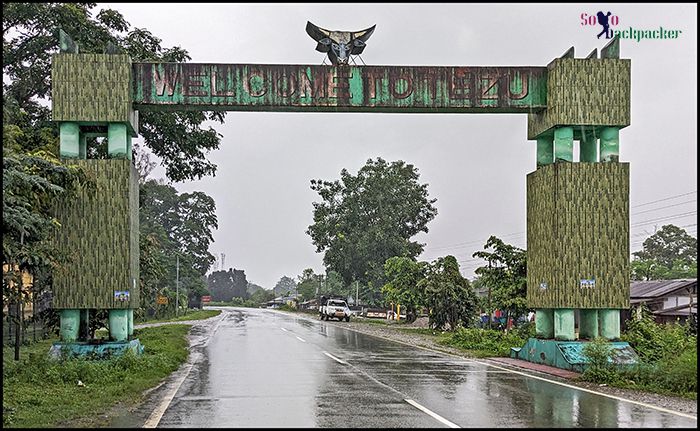
The following morning, upon waking up at 0700 hrs, I received the heartbreaking news from the caretaker. She informed me that the road remained obstructed and no vehicles were passing through. Despite my packed schedule, I had an extra day at my disposal. Therefore, I chose to remain in Tezu for an additional day before finalizing my next move. As it continued to rain outside, I found myself somewhat confined to my room. But, I had no intention to waste a day sitting idle in the room.
I inquired with the caretaker about the possibility of arranging a motorcycle for me. To my delight, she agreed, and within a couple of hours, I was provided with a well-maintained Bullet Machismo motorcycle. I had rain suit at my disposal and also had the prior experiences of riding a bike in rainy conditions in Meghalaya. Riding in the rain wasn’t going to be a big issue. I decided to embark on a day-long ride to the nearby destinations like The Golden Pagoda and Parshuram Kund.
I started my trip to the Golden Pagoda amidst a heavy downpour. Surprisingly, the rain enhanced the beauty of the road, making it one of the most scenic routes to travel. This route boasts stunning natural beauties in the form of lush forests and meandering rivers making it spectacular during the monsoon.
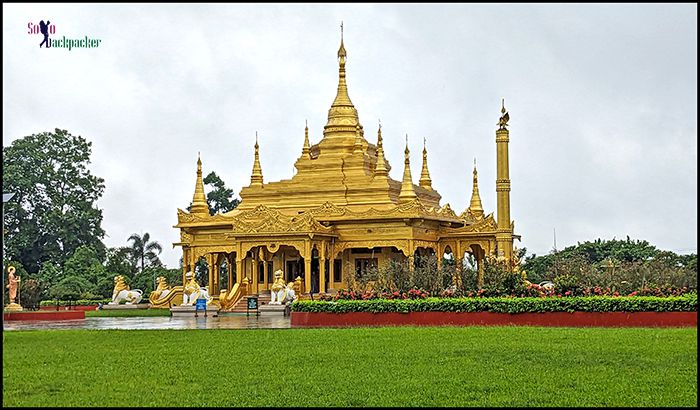
After visiting the Golden Pagoda, I headed back to Chongkham and then set out on the road leading to Parsuram Kund. I thought it would be a well-connected place with lots of public transportation and bustling with pilgrims. However, it turned out to be quite the opposite. It’s an extremely remote area, and you’ll hardly come across any vehicles in the strech of 20 km after crossing Wakro village.
Despite facing the difficulties posed by heavy rain, navigating the road’s nallah crossings, and the remoteness of the region, I managed to visit Parsuram Kund before returning to Tezu in the evening. I’ll share more about my journey to the Golden Pagoda and Parsuram Kund in my next post.
2. How to reach Tezu?
Tezu is conveniently reachable via a variety of transportation options, making it easily accessible despite its remote location in the North Eastern Region. The town boasts a well-developed road network with smooth highways that provide seamless connections to nearby major cities such as Dibrugarh, Tinsukia, and Pasighat.
For travellers seeking public transportation, there are shared public buses and Winger mini buses operating between Tinsukia and Tezu throughout the day, with a frequency of 2-3 hours. Additionally, night buses are available for those who prefer traveling during the night.
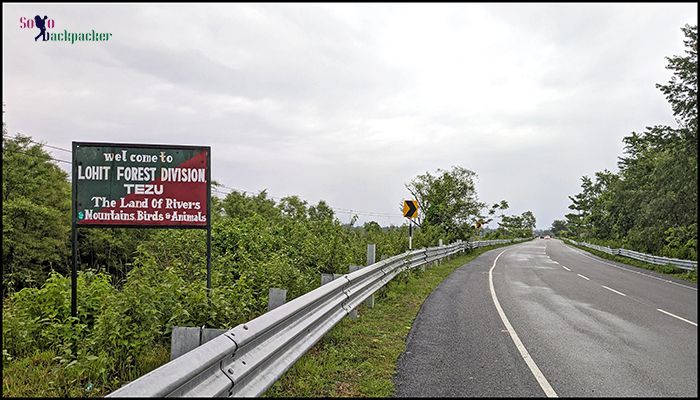
The nearest major railway station to Tezu is New Tinsukia Junction, situated approximately 160 km (4 hours) away, making it a viable option for reaching the town by train. New Tinsukia is directly connected to many cities in India on the rail network.
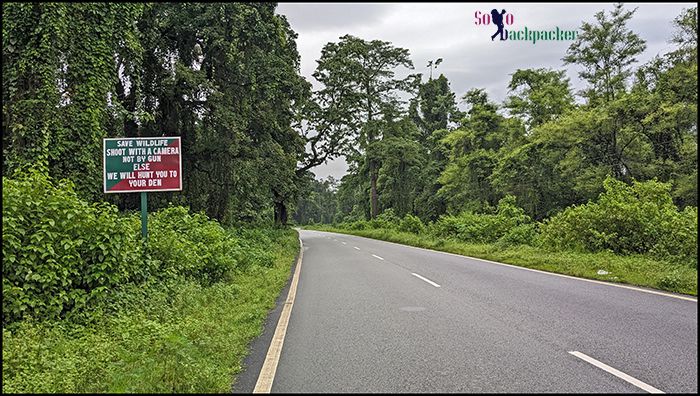
However, in my personal opinion, the most convenient means of reaching Tezu is by air, specifically from Guwahati. Guwahati enjoys excellent connectivity with major cities across India and serves as a gateway to the North East. FlyBig Airlines operates daily flights from Guwahati to Tezu, often offering affordable fares starting as low as Rs. 999. This option not only saves time but also provides a comfortable and efficient way to reach Tezu.
Please keep in mind that non-residents planning to visit Arunachal Pradesh must obtain Inner Line Permits (ILP) before commencing their journey. Additionally, if you are traveling by road, you can obtain an ILP on arrival at all checkpoints located along the Assam-Arunachal Pradesh border. Another convenient option is to secure your ILP ONLINE before commencing your journey for a hassle-free experience. ILP can be obtained after arrival at Guwahati Airport, Dibrugarh Airport and Tezu Airport.
Read here about Inner Line Permit in Arunachal Pradesh: How To Get Inner Line Permit (ILP) For Arunachal Pradesh?
While the travel routes to Tezu may not be significantly impacted by weather conditions, it’s crucial to note that flight operations are highly dependent on the prevailing weather conditions. Furthermore, the condition of the roads in the mountainous terrain surrounding Tezu is subject to weather-related challenges. During the monsoon season, road blockades due to landslides are a frequent occurrence. Therefore, it is strongly advisable to stay informed about local updates and road conditions before embarking on your trip to this bustling town in the northeastern region of India.
3. Where to stay in Tezu?
Tezu, situated in a relatively remote region, is a quaint town that is just beginning to develop its tourism infrastructure, despite having good road access from all directions and even an airport. There is much room for growth to attract travellers to this area. In terms of accommodations, Tezu offers a range of options, including budget-friendly hotels, basic guesthouses, a government circuit house, and a handful of home-stays. A guesthouse is also available inside the premises of the Botanical Garden.
The majority of tourists who visit Tezu are typically day-trippers from nearby places in Assam, who come to enjoy a day of picnicking near the rivers or at resorts in the vicinity before returning home in the evening. If you’re seeking a more luxurious experience, the riverside resorts surrounding the town are the ideal choice.
4. Public Transport in Tezu
Due to its small size, Tezu lacks an extensive public transport network. However, there are some viable options for getting around the town. Shared auto-rickshaws are a common mode of transportation in Tezu, providing an affordable means of travel within the town. Additionally, both E-Rickshaws and regular auto-rickshaws are available for hire, making them convenient choices for moving from one place to another within Tezu.
Exploring Tezu on foot is not the most practical option, except perhaps for leisurely strolls in the market area. This is because many of the town’s points of interest, such as riverbanks, resorts, and hills, are located at some distance from each other. To fully enjoy these attractions, utilizing auto-rickshaws or other local transportation options is recommended, as it ensures efficient and convenient access to Tezu’s diverse offerings.
5. Bike Rental in Tezu
Practically speaking bike rentals in Tezu are not readily available. However, with some local assistance, you might get lucky to find a bike for rent in Tezu. During my stay there, I had the opportunity to meet an individual who had a diverse range of Royal Enfield motorcycles available for rent, although this was a temporary arrangement for a few months. Nevertheless, the caretaker at my homestay assured me that I could rent a bike whenever I returned to Tezu. While it may not be a commercial service, a personal connection can help you secure a rental bike. You can expect to pay around Rs 1000 per day for a Royal Enfield motorcycle.
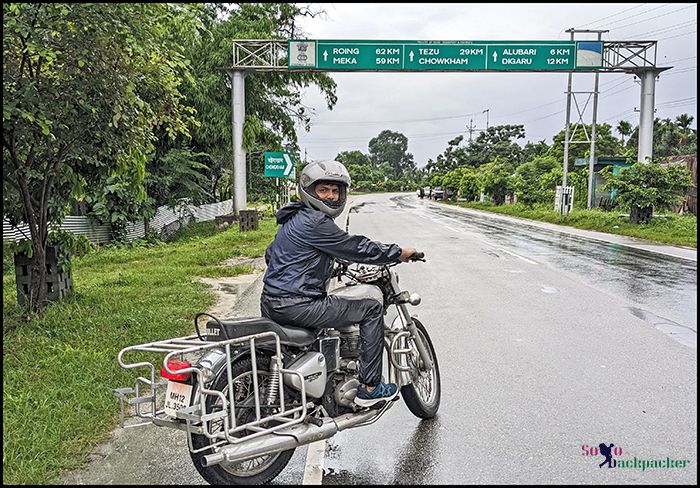
If you’re looking for more readily available rental services, the nearest option is in Dibrugarh, which is also a good choice for exploring the region. Bike rentals in Dibrugarh typically charge between Rs 1200-1800 per day, depending on the type of motorcycle you choose. You can rent options like the Classic 350, Himalayan, or Bajaj Dominar from Dibrugarh.
6. Places to visit near Tezu
While most tourists come to Tezu with the primary intention of exploring well-known attractions such as the Golden Pagoda and Parsuram Kund, only a handful of adventurers venture further to explore the remote eastern border villages like Kibithoo and Dong or the northernmost corners like Anini. Nevertheless, this region offers a plenty of options for travellers. Here are some recommended destinations in the vicinity of Tezu:
Popular Resorts
Tezu is home to numerous resorts, tucked away amidst the serene hills, offering a secluded and peaceful atmosphere. They are the perfect destination for those seeking a break from the hustle and bustle of city life. During the monsoon, rains have worked their magic, turning the usually arid landscape into a lush paradise.
Most of the resorts are situated along a riverbank with crystal clear water, gently meandering through the landscape. The post-monsoon season sees the river at its fullest, and the sound of its gentle flow is a soothing backdrop to the resort’s ambiance. Guests can relish their meals while enjoying breathtaking views, as many dining areas offer vistas of the river and the surrounding hills.
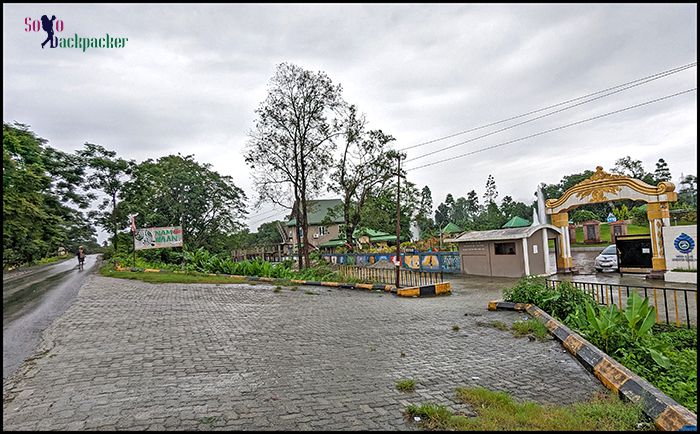
Blessed with lush hills, meandering rivers, and beautiful cottages, these resorts promise an unforgettable experience enveloped by the natural splendour of the great outdoors. Among the well-known resorts near Tezu Town are Tung Tao Resort, Digaru Eco Resort, Namwaan Resort, Soppong Island Resort, and more.
Enchanting Riverbanks
Tezu is blessed with numerous rivers in its proximity having abundant water during the monsoon season, but mostly drying up during the summer months. During the monsoon, these rivers swell with rainwater often becoming powerful and fast-flowing. Located in the picturesque hilly regions and lush green forests the riverbanks offer a stunning vista of natural landscape. These rivers are excellent destinations for picnic in the period following the monsoon season, providing opportunities to indulge in activities such as bathing, swimming, angling, and various other outdoor adventures.
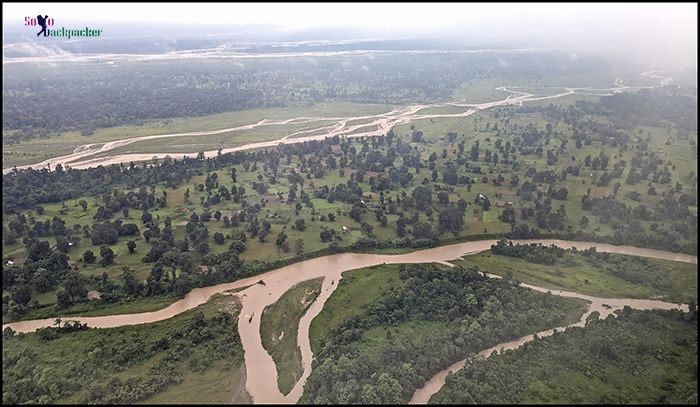
Lohitpur Village
Lohitpur, a quaint village situated approximately 15 kilometers from Tezu, can be reached by following the road that connects Tezu to the airport. This scenic route provides stunning vistas of Tezu Town, the encircling mountains, and the picturesque river valleys below.
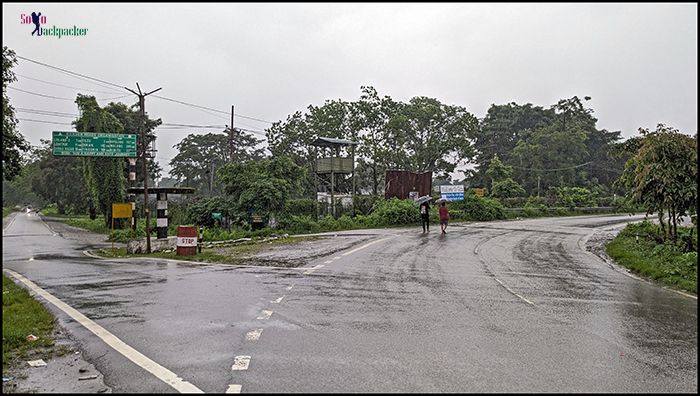
In the heart of Lohitpur, a beautiful temple is carefully maintained by the ITBP unit. While the primary deity revered in this temple is Lord Shiva, it is aptly named the “Sarva Dharma Sthal,” symbolising the religious inclusivity and harmony that defines the locality.
The peaceful ambiance of Lohitpur, complemented by its unspoiled natural splendour, transforms it into an undiscovered treasure waiting to be explored by those in search of serenity and an opportunity for cultural enrichment.
Roing Town
Roing, located about 62 km away from Tezu, serves as a gateway to remote areas such Mayodiya Pass, Hunli and Anini in Arunachal Pradesh, extending up to the Chinese border. Although the town, much like Tezu, is fairly sizable, it takes on a tranquil atmosphere once you venture past the central market area. Occasional shops and eateries line both sides of the road.
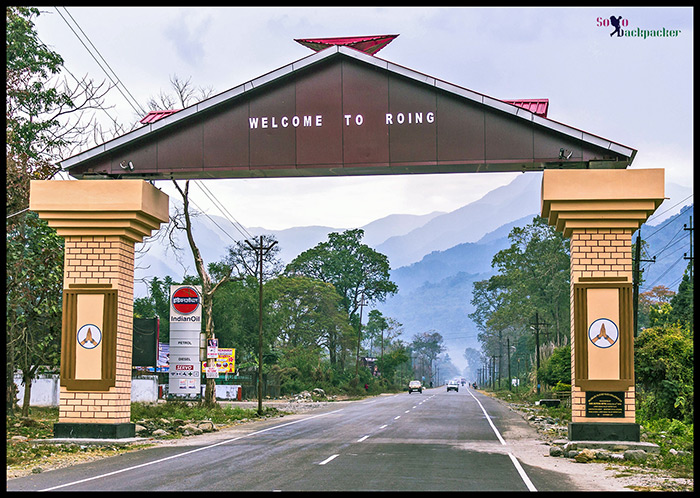
The Deopani Picnic Spot, situated on the outskirts of town, stands out as Roing’s most renowned attraction. It attracts numerous tourists who come to relish the breathtaking mountain views across the river. While the road leading beyond the Deopani River towards Mayodiya was in poor condition during my initial visit, it is now well-maintained up to the mountain pass. The onward journey from Mayodiya to Anini offers a glimpse of some of the most awe-inspiring landscapes in the region, with winding roads meandering through dense forests and providing sweeping vistas of the rugged mountains.
Read here about Roing Trip: Roing Trip: In A Beautiful Town Of Arunachal Pradesh
Approximately 5 km from Roing, Sally Lake is another attraction of the area. It’s a small lake with a serene atmosphere, but it appears to have fallen into disrepair. It seems that efforts were made in the past to develop this location into an appealing tourist destination, but for some reason, those efforts have not been sustained. A person is there to issue entry tickets to visitors, and amenities like resorts, walkways, viewpoints, and paddle boats are available, though they are not in optimal condition.
Roing’s leisurely pace of life, welcoming locals, and unspoiled natural surroundings make it an idyllic escape from the hustle and bustle of city life. Roing is a place where time appears to slow down, allowing visitors to connect with nature, explore the area’s unique culture, and recharge their spirits.
Dambuk Village
A few years ago, getting to Dambuk, the renowned “Orange Bowl of Arunachal Pradesh”, could have been a nightmare or thrilling experience in itself. Although Dambuk is merely 30 km away from Roing, a significant obstacle existed in the form of the Dibang River near Bomjir village, where no bridge existed in the past.
Read here about our Adventurous Trip to Dambuk in Hindi: रोइंग से पासीघाट की रोमाँचक कार यात्रा
Crossing this river during the monsoon season was exceptionally challenging, as it raged down with tremendous force towards the plains of Assam, eventually merging with the Lohit River near Sadiya. In the winter, when the water level receded, one could attempt to cross the riverbed by driving across and by using a boat. It was during the year 2018 that we embarked on this adventurous journey.
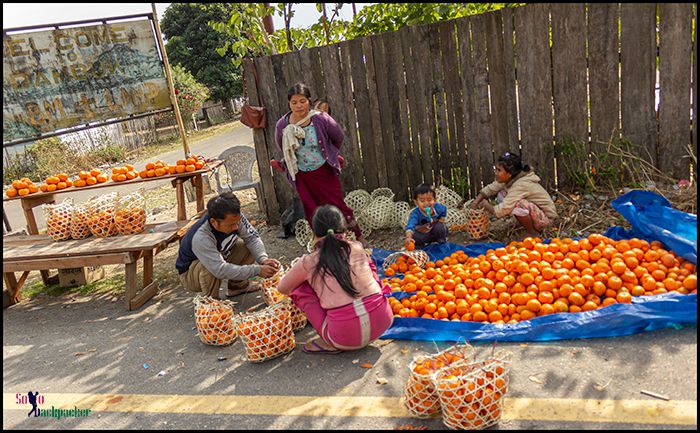
Subsequently, a bridge was inaugurated across the Dibang River in the latter part of the same year, transforming Dambuk into a regional hotspot. The annual Orange Festival, featuring music, dance, and thrilling adventure sports, infuses life into the region. Dambuk is a destination that deserves a place on your must-visit list, regardless of the season.
Kibithoo, Dong and Kaho Villages
The beautiful villages of Kibithoo, Dong, and Kaho, famous as the far easternmost villages of India, are the main reason why many tourists visit Tezu. The beautiful villages are easily accessible from Tezu by shared Sumo or Winger mini-buses.
Nestled within the Anjaw district of Arunachal Pradesh, these villages offer an unparalleled experiences. You can see some amazing views of China just on the other side of the border. Dong village is particularly famous because it’s the first place in India where the sun rises in the morning.
The road to Kibithoo has been recently built, and it’s in good condition. But because it goes through hilly areas, it can sometimes have landslide problems during the rainy season. When I reached Tezu during my trip, I couldn’t travel further because a landslide had blocked the road. But I’m determined to try again in the winter to finally get to the far easternmost villages of India.
Tezu and the places around it offer a wide range of experiences for different kinds of people. If you love nature, culture, adventure, or just want a peaceful break, there’s something for you here. The entire region provides a diverse journey with many aspects to discover, and it’s sure to leave a strong impression on you. While you visit these fantastic places, you’ll not only make wonderful memories but also develop a deeper understanding and respect for the varied landscapes, cultures, and traditions that make this part of the world so enchanting.


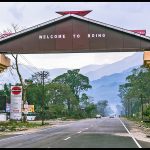
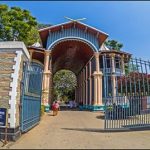

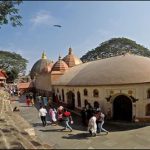
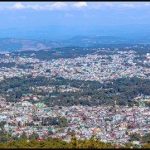
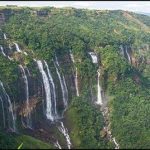
Hello,
Thanks for your information very useful for me to visit Kibithu
I need your Support to get Byke for rent in Tezu